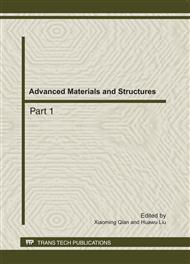p.419
p.423
p.429
p.433
p.442
p.446
p.451
p.455
p.460
Study on Properties and Cross-Linking Structure of NR Dried by Microwave
Abstract:
In this work, the cross-linking density and frequency sweep, temperature sweep of NR dried by microwave were tested by using nuclear magnetic resonance spectrometer (NMR) and rubber process analyzer (RPA), respectively. And the test results were compared with those of NR dried by hot-air. The results showed that the cross-linking density and A(Mc) for NR dried by microwave were bigger than those for NR dried by hot-air, but the A(T2) of latter was bigger; the frequency sweep results showed that the elastic modulus of NR dried by hot-air increased slower with the increase of frequency than those of NR dried by microwave , and the tanδ of NR dried by hot-air decreased with the increase of frequency slower than those of NR dried by microwave in low frequency phase, respectively; the temperature sweep results showed that the elastic modulus of NR dried by hot air were smaller compared with those of NR dried by microwave in the entire scanning process, but, the tanδ value of former was bigger.
Info:
Periodical:
Pages:
442-445
Citation:
Online since:
September 2011
Authors:
Keywords:
Price:
Сopyright:
© 2011 Trans Tech Publications Ltd. All Rights Reserved
Share:
Citation:


